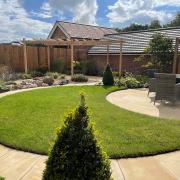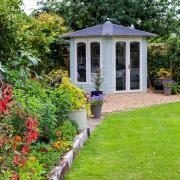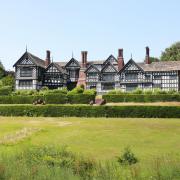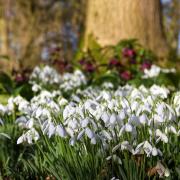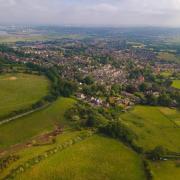More than three decades ago John and Alex Timpson were captivated by the display of azaleas when they went to view Sandymere at Cotebrook. Since then the gardens have evolved continuously. See for yourself this summer
When I was 16, my first Saturday job was at Timpson shoe shop in Wigan. Little did I imagine that more than 40 years later, I would find myself at Sandymere, the Cheshire home of Sir John Timpson, taking photographs for Cheshire Life magazine, and writing a feature about the magnificent gardens.
I visited Sandymere for the first time when it was open for the NGS charity in mid-May. It was a perfect time to see the azaleas in full bloom and explore the famous hosta garden that contains more varieties than you could possibly imagine.

Sandymere has everything from woodland walks to contemporary water features, all of which are blended seamlessly together by the beautiful planting, and lovingly cared for by the gardening team led by head gardener Rachel Norwood.
The history of a garden always intrigues me, and it was fascinating to read the booklet written by Sir John about the evolution of the garden. It was more than 35 years ago when he and his wife Alex moved to Sandymere, and the property came with 16 acres of land and a vast amount of potential. Viewing the house for the first time in May, they were captivated by the impressive collection of colourful azaleas, many of which remain in the garden today, but not necessarily in their original location.
The couple commissioned landscape architect Mark Darwent of Colvin and Moggridge to produce a plan for the gardens, which was to be completed in phases over a period of 10 years. In the event, the transformation was more gradual and the garden is still evolving to this day.

Mark’s original design included creating a series of different areas or garden rooms, that would be linked by pathways and include a surprise or feature around every corner. What a delight it must have been for the children to explore the extensive grounds, and enjoy the adventure playground and treehouse. As well as their own three children, Victoria, James and Edward, Sir John and Alex also had two adopted sons, Oliver and Henry, and over a period of 30 years, they fostered 90 children, for which Alex was awarded the MBE for services to children and families in 2006.
One of the key recommendations made by Mark was to remove the azalea bed and fill in the rock pond beyond. In the event, it was many years before this part of the plan came to fruition, but it was the right decision and opened up the wonderful view of the surrounding countryside. Water has always been of great importance in the garden, and over time new features have been added, including a rill that meanders from the main lawn, alongside a wisteria-covered pergola towards the hosta garden.

My journey through the garden took me in the same direction and without a doubt, the hosta garden is the most impressive I have ever encountered. The plants were introduced to Sandymere by the first head gardener, Henk Couwenhoven, and from a relatively modest beginning of around 20 plants, assisted by some expert micropropagation, there is now a collection of more than 20,000. The gardening team protects them from slug predators by the use of garlic spray rather than harmful slug pellets, and the healthiness of the plants is a testament to its success.
With Allium ‘Purple Sensation’ towering over the hostas, I followed the path down the side of the lake towards The Boathouse, which was built in Alex’s memory after she died in 2016. Candelabra primulas in shades of white, pink and red lined the path, and the borders were lush with spring greenery.
The garden is constantly reinventing itself, and I asked Rachel Norwood, who joined the team at Sandymere in 2010, what they were working on. She told me: 'The big project of the last few years has been the creation of a Japanese garden. This had to be put on hold for a while because of the Covid-19 pandemic but was completed in January last year. It includes all the essential elements of a Japanese garden including a dry stone river bed and planting that brings a sense of peace and tranquillity.

'We are also really excited about the introduction of bee hives and hope that the bees will enjoy the bountiful nectar of the lavender garden and produce a wonderful supply of lavender honey this year.'
If you’d like to see Sandymere for yourself, it opens on Sunday, June 25 for the National Garden Scheme and is also open by arrangement for charity groups in June and July.
findagarden.ngs.org.uk/garden/1837/sandymere
Alison Moore of Renaissance Garden Design is a garden designer and photographer based in Sale. She writes a blog about her own garden and other gardens she visits in Cheshire renaissance-gardendesign.co.uk Instagram: @alisonmoore Twitter: @renaissancegd










